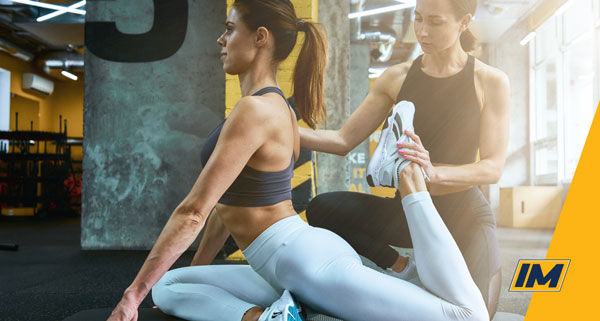We all would love to increase our range of motion and overall flexibility. Simple stretching on its own is often not adequate. InMotion Stretch Specialists are well versed in demonstrating to our clients how professional stretching greatly increases these arenas of our fitness regimen. One of the tools in our toolbox is PNF Stretching. PNF Stretching allows you to receive a much deeper level of results that simple stretching alone can provide.
WHAT IS PNF STRETCHING?
PNF, or proprioceptive neuromuscular facilitation, has been found through scientific studies to be the most effective for increasing your range of motion.
PNF stretching can also be performed in a variety of ways and all of them involve stretching the targeted muscle as far as you possibly can.
PNF STRETCHING TECHNIQUES DEFINED
The goal of PNF Stretching is to isolate and stretch your muscles in specific ways that will significantly impact your range of motion and flexibility. Here is a overview of the ways that PNF Stretching provides these impressive benefits:
Resistance
Applying resistance during the contraction phase of stretching a muscle creates a smoother motor response through re-educating the muscle. Some people will have a higher degree of resistance compared to others, so we work with each client individually to develop this important aspect of PNF.
Traction
Traction is also applied perpendicularly to your muscle’s arc of motion. This will also create a better motor response.
Manual Pressure
Manual pressure can be also used to facilitate an increase in flexibility via the muscle’s natural neuromuscular response.
Irridation
The relationship between larger and smaller muscle groups is used to your advantage in PNF Stretching. When we apply graded resistance to the larger groups, it enhances the muscle contraction in the weaker groups.
Stretch Reflex
The stretch reflex, also known as myotatic reflex, is activated when you hold a stretch for too long. Sometimes you stretch too far and go beyond the limits of what your body can do without injury.
PNF STRETCHING METHODS
There are three main methods for PNF stretching. Two approaches can be used together during the same stretching session: isometric agonist contraction and isometric antagonist contraction. A rest cycle of 20 seconds between stretches is also applied.
Method One: Hold-Relax
One of the most common PNF stretches is the hold-relax technique. This method begins with the hold-relax technique. Next is isometric stretching. Here, the muscle is contracted for you, as the client doesn’t actually move their body.
When your reflex is activated, you will have a short amount of time to stretch beyond what you would normally be capable of. This can last for upwards of 10 seconds.
Method Two: Contract-Relax
The PNF method also uses the very beneficial Contract-Relax approach. The muscle is held in the stretched position before contracting. When the muscle is contracted, we’ll move your body simultaneously. This is also known as “isotonic stretching.”
Method Three: Hold-Relax-Contract
The hold-relax-contract method adds a step at the end, we first follow the initial steps of the hold-relax technique. The difference here is that rather than completing a passive stretch or pushing against it, you’ll be pushing into it.
USING THE BREATH: A DYNAMIC STRETCHING TOOL
The awareness of the breath and using it properly during stretching cannot be emphasized enough. Proper breathing greatly reduces lactic build up in the muscles. Consequently, you have less discomfort and reduced recovery times.
Breathing also allows your mind and your body to calm down and relax. Muscles remain receptive and more limber.
STRETCHING BASICS SIMPLIFIED
An easy formula to follow for maximum benefits of every stretch session:
-
Contract
-
Relax
-
Breath
-
Stretch




